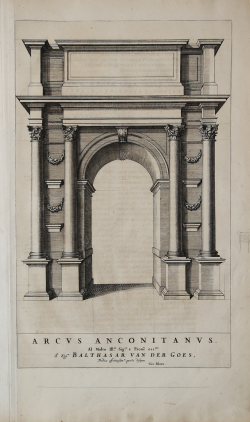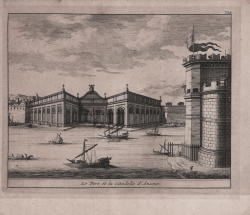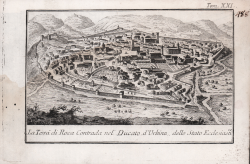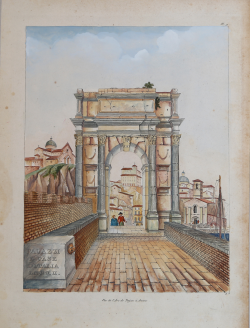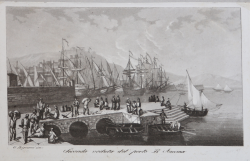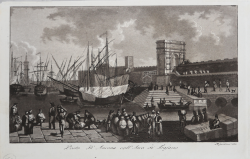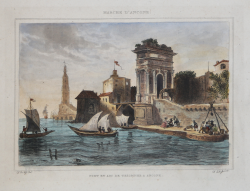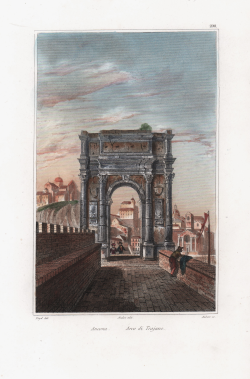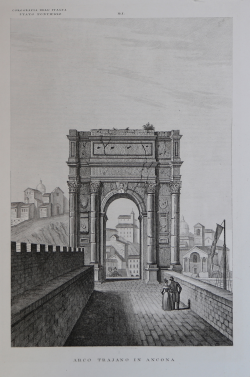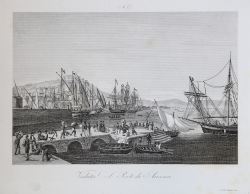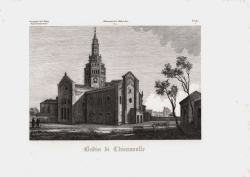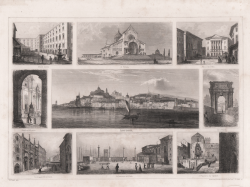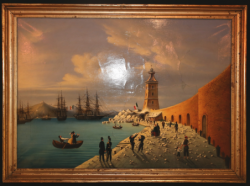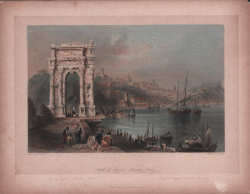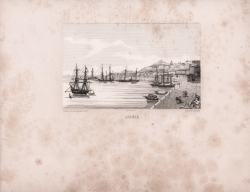Le Port et la citadelle d'Ancone
Alexandre de ROGISSART
Code:
s1089
Measures:
165 x 135 mm
Year:
1706
Printed:
Leyden
La Terra di Roca Contrada nel Ducato d'Urbino dello Stato...
Giambattista ALBRIZZI
Code:
CO-713
Measures:
150 x 100 mm
Year:
1757
Printed:
Venice
Vue de l'Arc de Trajan à Ancone
Pierre CLOCHAR
Code:
S11247
Measures:
255 x 355 mm
Year:
1809
Printed:
Paris
Seconda veduta del porto d'Ancona
Francesco GANDINI
Code:
S1084
Measures:
200 x 130 mm
Year:
1830 ca.
Printed:
Cremona
Porto d'Ancona coll'Arco di Traiano
Francesco GANDINI
Code:
S11361
Measures:
205 x 120 mm
Year:
1830 ca.
Printed:
Cremona
Port et Arc de Triomphe a Ancone
Napoleon SAUVAGE
Code:
S10291
Measures:
200 x 145 mm
Year:
1830 ca.
Printed:
Paris
Ancona. Arco di Trajano.
Louis Eustache AUDOT
Code:
S44564
Measures:
170 x 260 mm
Year:
1830 ca.
Printed:
Paris
Arco Trajano in Ancona
Attilio ZUCCAGNI ORLANDINI
Code:
S1073
Measures:
230 x 335 mm
Year:
1845
Printed:
Florence
Veduta del Porto di Ancona
Attilio ZUCCAGNI ORLANDINI
Code:
S10990
Measures:
320 x 255 mm
Year:
1845
Printed:
Florence
Badia di Chiaravalle
Attilio ZUCCAGNI ORLANDINI
Code:
S41723.92
Measures:
385 x 300 mm
Year:
1845
Printed:
Florence
Ancona, veduta dall’ultima Pesca situata sulla scogliera che...
Litografia GIONANTONI
Code:
IT36107
Measures:
1450 x 250 mm
Year:
1849
Printed:
Ancona
Arch of Trajan, and Citadel, Ancona
William Cooke STAFFORD
Code:
S1087
Measures:
210 x 155 mm
Year:
1860 ca.
Printed:
London

